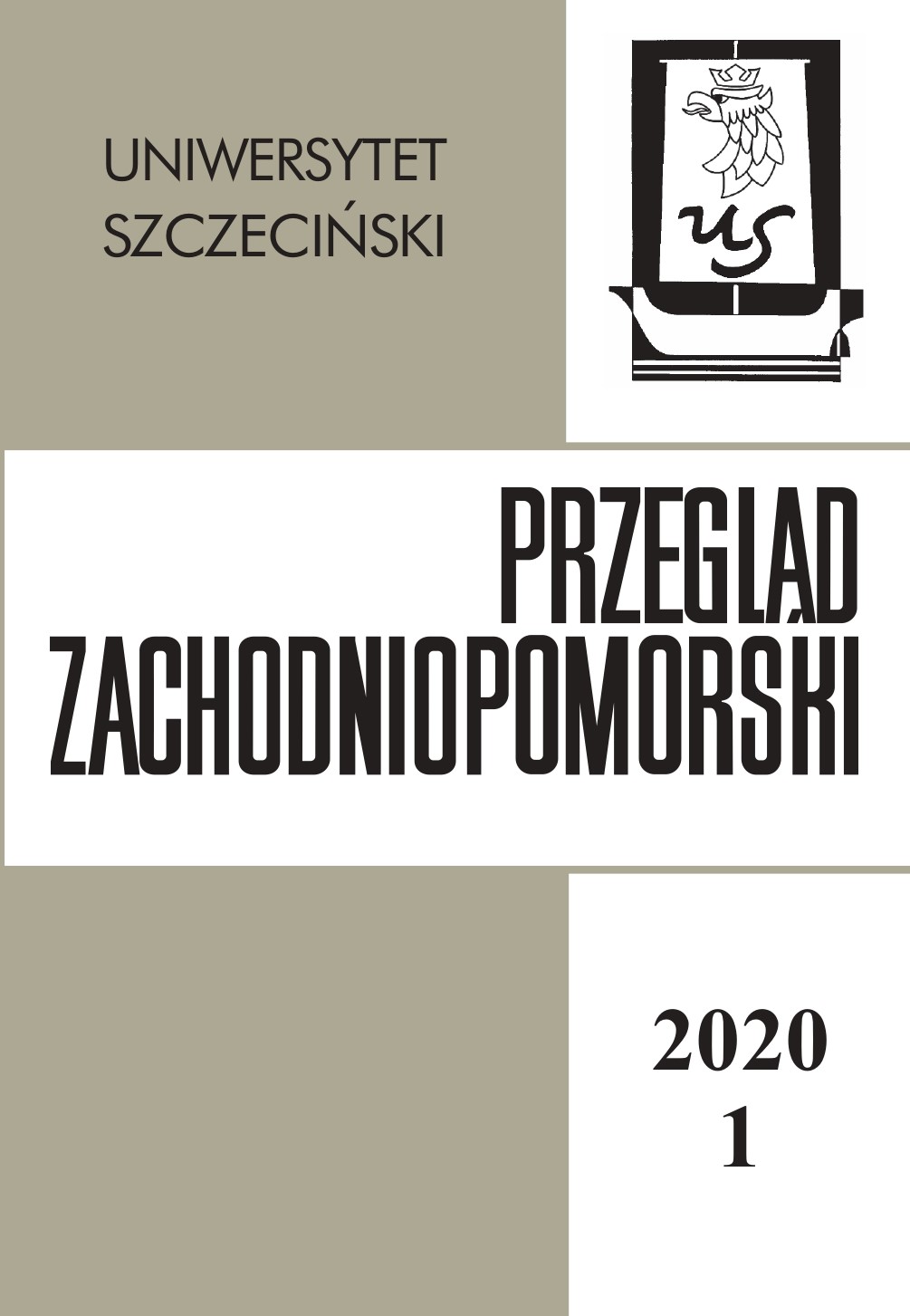Bogusław X w Czechach. Nieznane wyobrażenie szczecińskiego księcia na zamku w Písku z 1479 roku
Bogislaw X in Bohemia: An unknown image of the Szczecin Prince in the castle of Písek, 1479
Author(s): Bogusław CzechowiczSubject(s): History, Diplomatic history, Local History / Microhistory, Political history, Middle Ages, 15th Century
Published by: Wydawnictwo Naukowe Uniwersytetu Szczecińskiego
Keywords: Bogilslav X; castle in Písek; Bohemian Crown; Pomerania; gothic painting
Summary/Abstract: The purpose of this article is to identify an unrecognized so far figure in the gallery of the 15th-century European rulers painted on the wall of the representative hall of the royal castle in Písek, South Bohemia. This painting underwent a complete conservation treatment in early 19th century, but without intervention into its contents. It represents the King of Bohemia, Vladislaus II Jagiellon (his image on the eastern wall is preserved in rudiments) in a sub-local context (a cityscape of Písek), that of the estate society of the Bohemian Kingdom (coats of arms of Bohemian nobility, for the most part aristocracy), and in the Europe’s politic space. This latter purpose serve the images of the Bohemian rulers – two predecessors of Vladislaus II on St. Wenceslaus throne (Ladislaus the Posthumous von Habsburg and George of Poděbrady), his father Casimir Jagiellon, the ruler of Poland and Lithuania, and the King of France Charles VII – all of them are signed on the ribbon labels. The name of the last of them, as well as his image, are preserved partially – it is a ruler wearing a crown, with a griffin on the shield, and a fragment of the name “uslaw”. Undoubtedly, despite the crown on his head, it is the Szczecin Prince Bogislaw X Griffin. The article doesn’t explain the reasons why this image appeared there. It only outlines the political context which can account for this situation. In 1479 in Olomouc Vladislaus II concluded a treaty with Matthias Corvinus concerning a divided sovereignty in the Bohemian Crown. The Bohemian King from the Jagiellonian dynasty in Prague was gradually coming out of the international political isolation (although in 1479 he wasn’t still recognized by the Pope) and was building his political powerbase in Europe. One element of his politics, including the definite orientation towards the North, was his marriage per procura with Barbara Hohenzollern, daughter of margrave Albrecht Achilles, to whom Bogislaw X denied to pay feudal homage. The Szczecin Prince could search support from the Jagiellons, on whose court in Cracow he was raised. The question of the feudal relation of Pomerania to Brandenburg probably had to be confronted with the problem of the earlier feudal dependence of the feudal rule of the Hohenzollerns from the Bohemian Crown, de facto effective until 1415, de jure rather still in force as the Bohemian Crown Archive carefully kept documents which specified the obligations of the Hohenzollerns towards Prague. The Písek painting came into existence in the royal castle which, however, was at the time a collateral of the Bohemian aristocrat Lev of Rožmitál (Rosmital), brother of the Bohemian queen Joanna (wife of the Vladislaus II’s predecessor, George), who was an outstanding diplomat, member of a mission to France, pilgrim to the Holy Land, perfectly knowledgeable of the nuances of politics of that time. The painting demands deeper analysis in the light of the Prague politics oriented towards Brandenburg-Pomerania, as well as the Bohemian associations of the actions undertaken by prince Bogislav X, who was connected, as it turns out, to the Bohemian milieu not only by the bishop of Kamieniec Pomorski, Benedykt of Waldstein, who floruit after the painting was made.
Journal: Przegląd Zachodniopomorski
- Issue Year: 35/2020
- Issue No: 01
- Page Range: 23-39
- Page Count: 17
- Language: Polish

